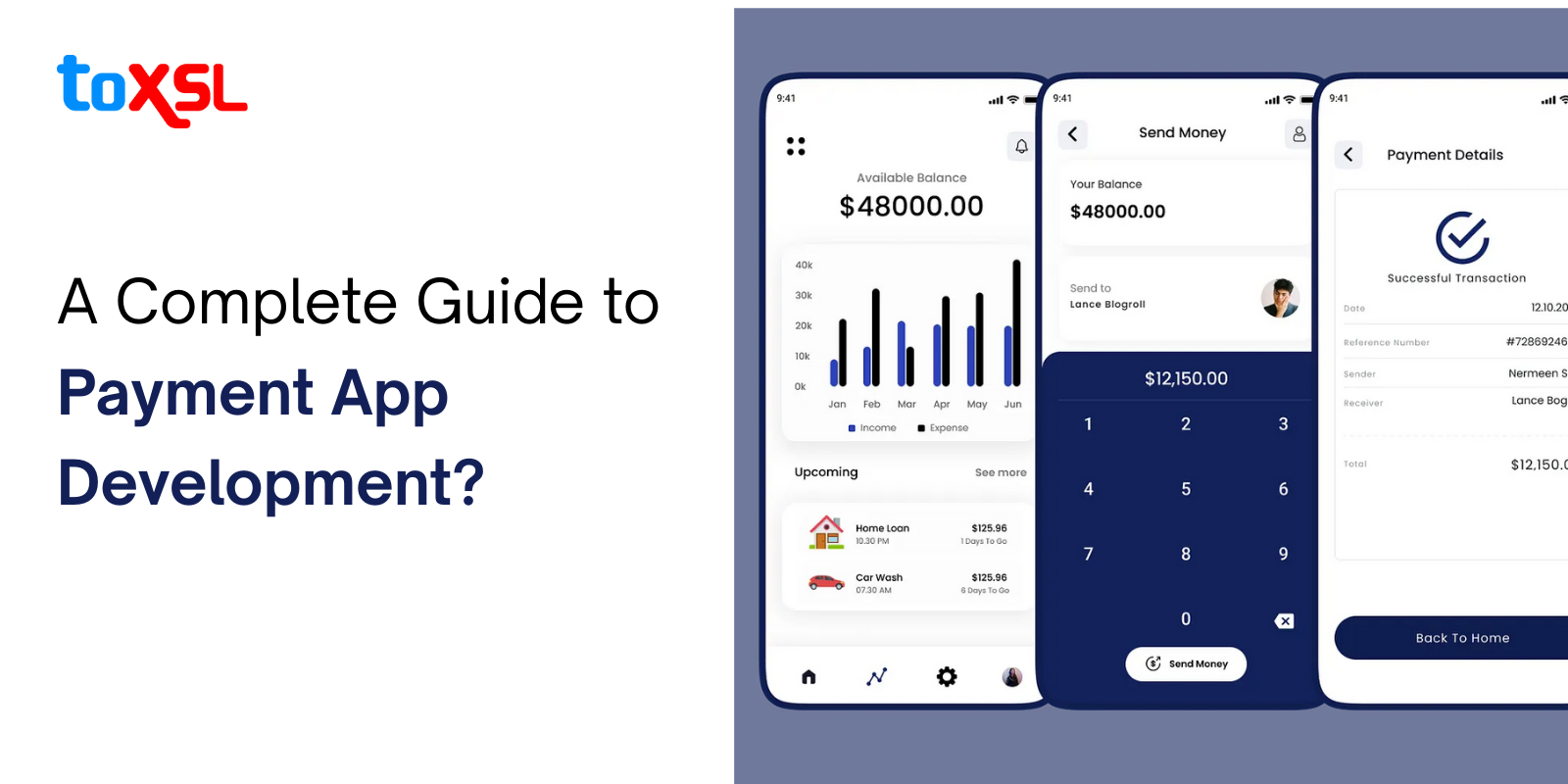Have you ever wondered how millions transfer money seamlessly with just a few taps on their phones? How have mobile payments and digital wallets become an important part of daily life? Why are businesses racing to integrate payment apps into their sales channels? How do these applications reshape the financial landscape for both consumers and companies?
- Payment apps are transforming business transactions worldwide, enhancing convenience, security, and reach.
- There are multiple types of payment apps, including P2P, mobile wallets, payment gateways, and POS solutions.
- Developing a payment app needs strategic planning, technology selection, security compliance, and user-centric design.
- The cost of payment app development ranges from $10,000 to $100,000+, depending on business requirements.
- Businesses can use various monetization methods, including transaction fees, premium features, cross-border fees, and advertising.
- The future trends in payment app development will be the encapsulation of intelligent tech, including AI, blockchain, cryptocurrency, and IoT-enabled transactions.
- The digital payments market size is estimated at USD 121.53 billion in 2025 and is projected to reach USD 358.81 billion by 2030, at a CAGR of 19.43%.
- Mobile payments are projected to account for 50% of all e-commerce transactions this year.
- Over 3 billion people use FinTech services, with digital wallets expected to power 61% of all e-commerce sales by 2027.
- In India alone, the Unified Payments Interface (UPI) processed more than 18.6 billion transactions in May 2025, reflecting a massive shift to digital payments.
- Global digital payment volumes reached $18.7 trillion in 2024 and are expected to more than double by 2030.
- With such explosive growth, the question is no longer whether you should build a payment app, but how to build one successfully.
Payment App Type | Description | Best For | Key Features | Platforms Supported |
|---|---|---|---|---|
Peer-to-Peer (P2P) Apps | Enable direct money transfer between individuals | Personal transfers, splitting bills | Instant transfers, social features, easy bank/card linkage | iOS, Android |
Store payment info for contactless in-store and online payments | Everyday purchases, quick payments | Biometric security, NFC, QR code payments, wallet management | iOS, Android | |
Facilitate online payments between merchants and customers | E-commerce sites, online merchants | Secure payment processing, multiple currency support, fraud detection | Web, mobile | |
Point of Sale (POS) Apps | Combine payment processing with retail sales functions | Retailers, restaurants, service providers | Card reader integration, inventory management, sales reporting | iOS, Android, dedicated POS devices |
Cross-Border Payment Apps | Handle international, multi-currency transactions | Businesses and users with international payments | Currency conversion, compliance, fast settlement | iOS, Android, Web |
Cryptocurrency Payment Apps | Accept and process payments in cryptocurrencies | Crypto users and merchants | Blockchain integration, crypto wallets, secure transfers | iOS, Android, Web |
Development Phase | Basic App Cost ($) | Moderate App Cost ($) | Complex App Cost ($) | Description |
Discovery & Research | 3,000 – 7,000 | 5,000 – 10,000 | 7,000 – 12,000 | Market analysis, requirement gathering, compliance |
UX/UI Design | 5,000 – 10,000 | 10,000 – 20,000 | 15,000 – 30,000 | Wireframing, prototyping, user-friendly interface |
Front-end Development | 10,000 – 20,000 | 20,000 – 40,000 | 40,000 – 80,000 | User-facing app screens, cross-platform or native |
Back-end Development | 15,000 – 25,000 | 30,000 – 50,000 | 60,000 – 120,000 | Server, database, APIs, payment gateway integration |
Security & Compliance | 5,000 – 10,000 | 12,000 – 25,000 | 25,000 – 50,000 | PCI DSS, encryption, fraud prevention, KYC/AML |
Testing & QA | 5,000 – 10,000 | 8,000 – 15,000 | 15,000 – 25,000 | Functional, performance, and security testing |
Deployment | 1,000 – 3,000 | 2,000 – 5,000 | 3,000 – 7,000 | App store launch, infrastructure setup |
Maintenance & Support | 10-20% of total cost annually | 10-20% of total cost annually | 10-20% of total cost annually | Bug fixes, updates, security patches |
Estimated Total Development Cost by Complexity
App Complexity | Estimated Total Cost Range ($) | Estimated Development Time |
Basic | 10,000 – 25,000 | 3 – 6 months |
Moderate | 25,000 – 50,000 | 6 – 9 months |
Complex | 100,000 – 300,000+ | 9 – 12 months or more |
- Features: Advanced functions, such as multi-currency support, cryptocurrency payments, AI fraud detection, and peer-to-peer transfers, increase complexity and cost.
- Platform Choice: Developing for both iOS and Android, or including a web app, adds to time and cost.
- Security & Compliance: Implementing rigorous security protocols and ensuring compliance with PCI DSS, GDPR, and other relevant regulations requires significant technical effort.
- Development Team Location: Developer rates vary widely by region, from $20-$40/hour in Asia to $100+ in North America and Europe.
- Third-party Integrations: Payment gateways, KYC providers, and banking APIs can have licensing fees and integration complexities.
- UI/UX Design Complexity: Custom, highly engaging, and user-friendly designs will cost more than standard templates.
- Post-launch Support: Maintenance budget is essential to keep the app secure and updated as new threats and regulations emerge.
- Charging a fee for each payment made, either a fixed amount or a small part of the payment.
- Charging extra for special services, like faster payments, sending more money, or better security.
- Adding a small extra cost when customers exchange money between different countries.
- Earning interest from the money held temporarily in user accounts.
- Showing ads inside the app and earning money from advertisers.
- Making money from user data, but only if users agree to it.
Frequently Asked Questions
- What is a P2P payment app?
A P2P (peer-to-peer) payment app allows people to send money directly to each other using their phones or computers. - How long does it take to create a payment app?
Making a payment app usually takes a few months, depending on how complex it is and the features you want. - How do you create a money transfer app?
To build a mobile payment app, you need to plan the features, design the app, develop the software, test it, and then launch it for users - How can AI and machine learning be used in payment apps?
AI and machine learning help payment apps by spotting fraud, improving security, personalizing user experience, and making transactions faster and smarter.


















Share this post on: